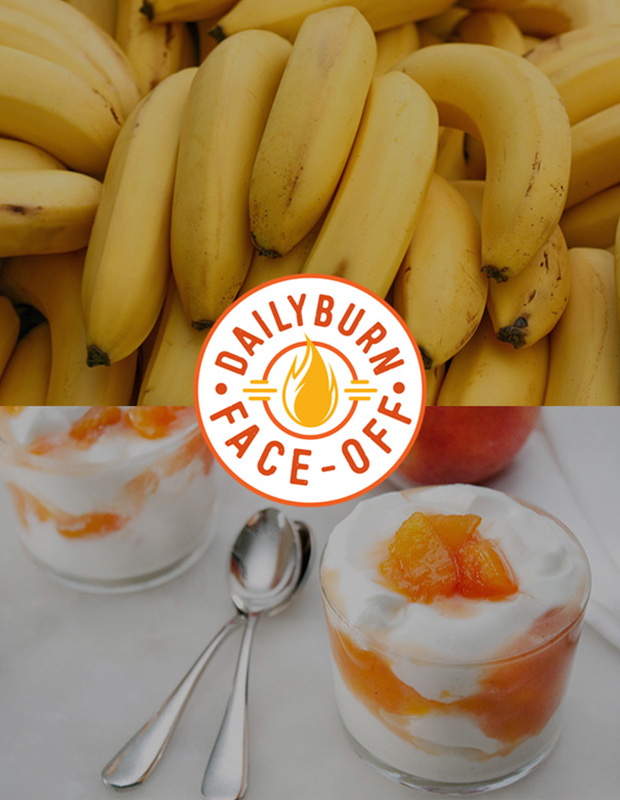
Probiotics have been a household term ever since Jamie-Lee Curtis started touting the digestive benefits of her favorite brand of yogurt. (Who could really forget those Activia commercials?) But have you heard of prebiotics? Both compounds, which live in the gut, are microscopic, but they play no small role in our digestive health. In fact, we have 10 times as many bacterial cells in our intestines than we have total human cells in our entire body, according to Maitreyi Raman, MD, in The Complete Prebiotic & Probiotic Health Guide. To get the low down on how these tummy residents benefit your body — and which ones we really need — we turned to Raman and the Nutrition Twins — aka Lyssie Lakatos and Tammy Lakatos-Shames — and authors of The Nutrition Twins’ Veggie Cure.
RELATED: What’s the Story With Teatoxes?
What Are Probiotics and Prebiotics?
Simply put, probiotics are the good bacteria living in your digestive system. “We all have good and bad bacteria,” says Lakatos-Shames. “You’ll always have some of both, but probiotics work to keep a good balance so you stay healthy,” she says. That’s because they limit the ability of bad bacteria, or pathogens, that live in your gut. Probiotics are commonly found in fermented foods like Greek yogurt, sauerkraut, miso soup, kombucha, kefir and some soft cheeses. Lakatos-Shames notes that for probiotics to stay living and viable, it’s essential to keep these foods and drinks cold before you consume them. (A mini-fridge, like this one, is perfect if you’re a desk jockey.)
RELATED: 9 All-Natural Sources of Probiotics
Prebiotics, on the other hand, aren’t a bacterium, despite the similar name. “Prebiotics are fiber — carbohydrates that aren’t digested by the body — and they feed probiotics and help them to flourish,” says Lakatos. Specifically, this type of fiber stimulates the growth of healthy gut bacteria like Lactobacillus, Bifidobacterium and Faecalibacterium, adds Raman.
And there are plenty of ways you’re probably already getting your prebiotics, which are found in bananas, oatmeal, Jerusalem artichokes (also called sunchokes), garlic, onion, chicory root and leeks. Companies have also started adding them to packaged foods including yogurts, nutrition bars such as Gnu Foods Fiber Love, and certain desserts like Arctic Zero ice cream.
The Many Health Benefits of Both
Since prebiotics help feed the growth of probiotics, know that they’re both important to have within a healthy diet. Probiotics may help with conditions like diarrhea, IBS, stomach ulcers, diabetes, obesity and allergies, says Raman. Plus, they aid regular healthy functions like digestion. And probiotics also play a big role in keeping your immune system functioning properly, since the gut is the largest immune organ in the body, with more than 70 percent of immune cells residing there, she explains.
RELATED: 16 Recipes That Will Help You Detox
Prebiotics can also help alleviate diarrhea and IBS, and may help prevent colon cancer, according to a 2013 study in the journal Nutrients. And since they’re fibrous, including them on your plate can help you feel fuller, longer, Raman says.
But it’s not necessarily all about how many prebiotics or probiotics you can tally up in one day. Keeping the two properly balanced is the key for feeling healthy and avoiding illness in the long run, Raman says. While there’s no hard or fast set of guidelines on finding the ideal balance, you’ll likely end up with a good mix if you eat a healthy, clean diet, she adds.
The Story With Those Supplements, Though
When clean, healthy eating gets tough, you may wonder, “What about the bottled stuff?” In the last few years, probiotics supplements have made a splash in the wellness world. A good rule of thumb if you decide to take a probiotic supplement, is to look for one with at least three different strains of bacteria, says Lakatos, since each probiotic strain has its own individual function. Likewise, refrigerated bottles are best — after all, they are live bacteria that need to be stored in a cool, dry and dark place to stay alive. And while not yet available, prebiotic supplements are on the horizon, though they may end up being expensive, says Raman.
However, getting both nutrients from food is probably the best way to go, says Lakatos. “My concern with taking a supplement is that any bacteria can potentially weed out another bacteria, because there’s never room for them all of them. So if you take a good strain of this and a good strain of that, they could cancel each other out,” she adds. “If you get them from food, though, your body will figure it out. Your body selects naturally from food. You might be throwing off the balance from supplements.”
RELATED: How to Choose the Right Probiotic for You
The goal: Incorporating foods that contain probiotics into your meals daily. “They’ll help each person differently, so not everyone will have the same effects,” Lakatos says. “If you’ve been taking antibiotics, for instance, you might need more. It’s a matter of trial and error, seeing what works best for your body.”
The Bottom Line
It’s not exactly one or the other when it comes to pre- and probiotics; they’re really two pieces of a puzzle that fit together, says Raman. So keeping a healthy balance of both — and focusing on getting them from whole foods — is the key for racking up the most health benefits.
